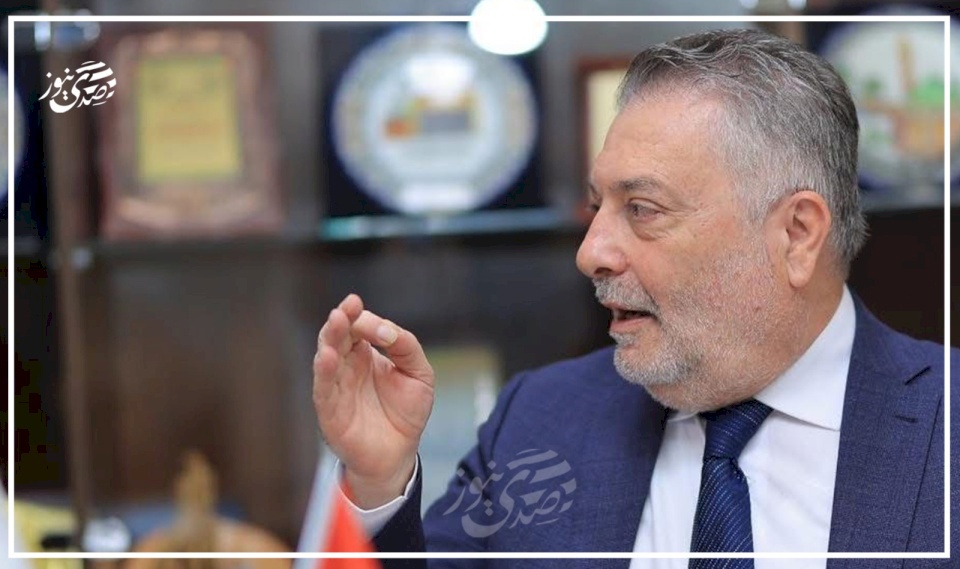
Gaza... When the Economy Collapses Before Reconstruction
In Gaza, loss is not measured by the number of destroyed buildings or the volume of rubble stretching across the horizon, but rather by the remaining ability of people to live, work, and hope. The war that burnt the stones left behind an economy that barely breathes, where recession has transformed into total collapse, erasing the distances between poverty, unemployment, and despair.
The war directly struck at the heart of the economy, freezing commercial activity, disrupting production chains, and closing the doors of factories that formed the main arteries of daily life.
International institutions estimate that the GDP in the Gaza Strip has contracted by more than 80% over the past year, and that more than nine out of ten economic establishments have ceased operations. These figures do not reflect a temporary decline but rather a deep collapse that threatens the very foundations of society. An economy that could barely balance production and consumption has now become reliant on humanitarian aid as its main source of survival, while youth unemployment has exceeded 79%, turning a university graduate into a symbol of a generation waiting its turn in a never-ending queue.
The youth of Gaza live in a reality that encapsulates the contradictions of the times: a well-educated and qualified generation, yet besieged by borders that open only for aid, not for ideas and projects. Small projects that once offered a breath of hope have closed their doors, and graduates who dreamed of a future in their homeland now think of leaving in search of opportunity, or settle for daily survival as their highest attainable ambition. As job opportunities diminish, faith in usefulness erodes, and the collective dream that kept Gaza alive wanes.
Before the successive wars, Gaza thrived with economic life; its small factories were producing, its farms were exporting, and its markets buzzed with activity. Today, everything has changed. More than 3,800 industrial establishments have shrunk to only a tenth of their former capacity, and agriculture, which once employed thousands of families, has diminished under the weight of destruction and scarcity of resources. With the drop in purchasing power and the cessation of trade exchanges, Gaza has entered a closed loop that only produces more poverty and frustration. People no longer seek profit or growth; they only seek to survive in an economy that has lost its pulse, turning into a long wait for aid that does not rejuvenate life.
Lessons from Previous Wars: Reconstruction Is Not Enough
Gaza has experienced repeated cycles of destruction and reconstruction without breaking free from the vicious circle.
After the 2014 war, the World Bank reported in its 2015 report that the reconstruction process was the slowest in the world since World War II, and that more than half of the international commitments were not actually implemented due to Israeli restrictions on the entry of construction materials, continued closure of crossings, and the complexities of the reconstruction mechanism.
The result was that thousands of families remained waiting for the reconstruction of their homes for over four years, while the production cycle had not resumed, and industrial establishments remained without funding or raw materials.
The World Bank's 2020 report also noted that the Gaza economy had lost more than 50% of its productive capacity over the course of a decade, and that economic growth during periods of "relative calm" did not exceed 1%, a rate insufficient even to compensate for population growth.
Thus, the lessons are clear: reconstruction that focuses on building without development only reproduces the crisis instead of addressing it. Closed crossings do not build an economy, and aid alone does not create stability.
From Rubble to Vision
Today, the sector needs a comprehensive national economic plan that redefines the concept of reconstruction. Reconstruction that begins with people before buildings, that rebuilds production rather than walls. A plan that prioritizes supporting small and medium enterprises to employ young people, rehabilitate industrial and agricultural areas, and enhance economic integration with the West Bank to break the trade isolation. The private sector, despite its heavy losses, still possesses the spirit of initiative and determination to rise again.
Previous experiences have proven that when national capital is given the opportunity, it can rise from the rubble.
Therefore, the establishment of a national fund for reconstruction and development, managed professionally and transparently, can be a true starting point, linking financing to production rather than consumption, and restoring trust between investors and the community.
Gaza and the Future
Rescuing Gaza is no longer just a humanitarian option, but a national necessity for the survival of the entire Palestinian economy.
Without a productive Gaza connected to the world, Palestinian development will remain incomplete, and the economic geography will remain paralyzed.
However, true reconstruction does not begin with cement and steel; it begins with rebuilding the human element — reactivating minds before factories, and reviving hope before stones.
Gaza still possesses what cannot be destroyed: the Palestinian people. Despite the siege and division, there remains a potential capable of rising again. Reconstruction that does not create jobs... is not reconstruction, but a temporary truce with pain.

Not an Effort but a Sin Worth Accountability

The Land: The Core of the Struggle for an Agricultural Policy that Protects Palestinian Ex...

Goodbye 2025: What Have Palestinians Learned from an Unprecedented Year?

Do Not Let Down the Millions of Italian Supporters

Awareness of Existential Threat

On the Policy of 'Separating the Daily from the General'...

Living Cells of the Palestinian Economy: Municipalities' Strategy to Create "Micro Economi...

